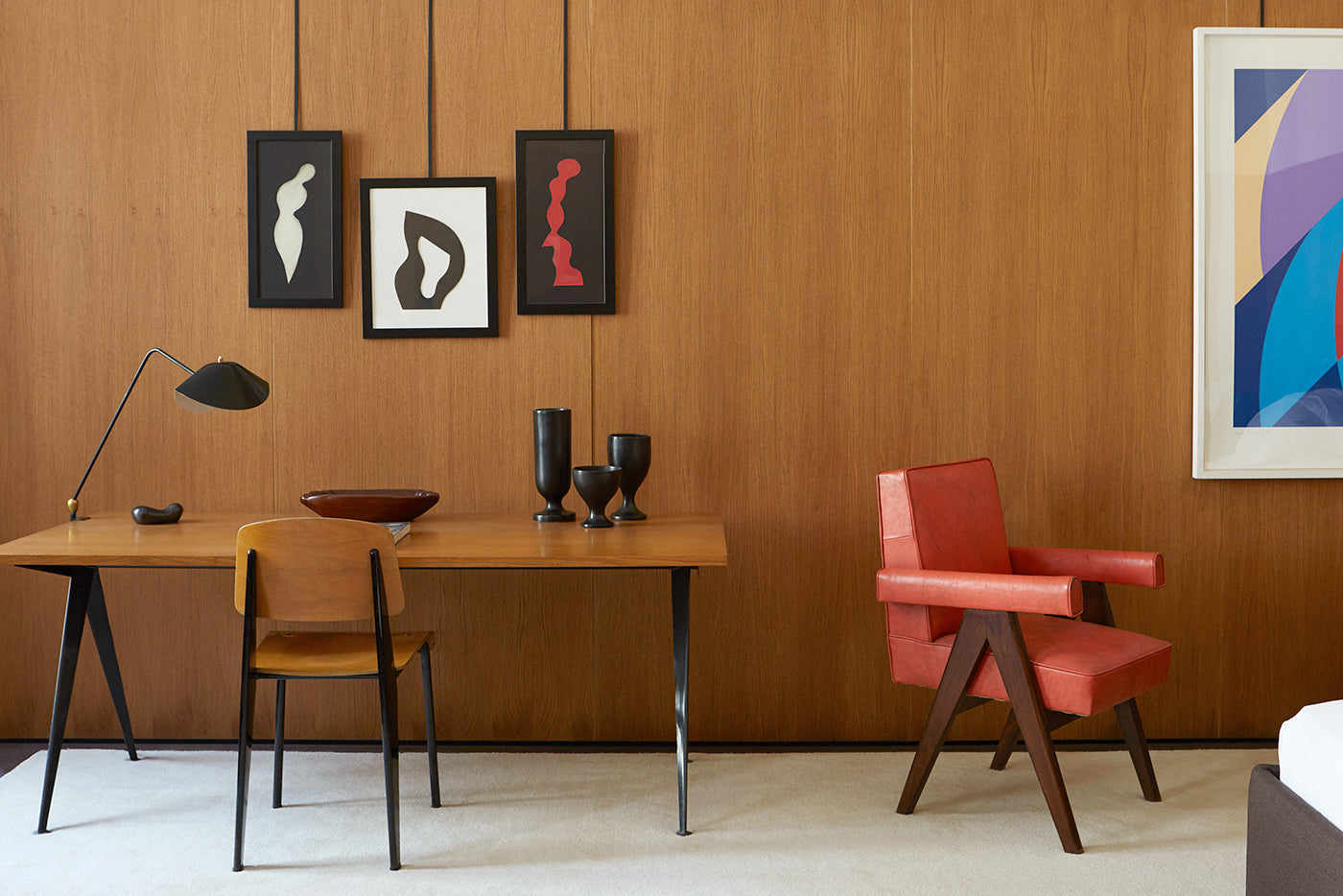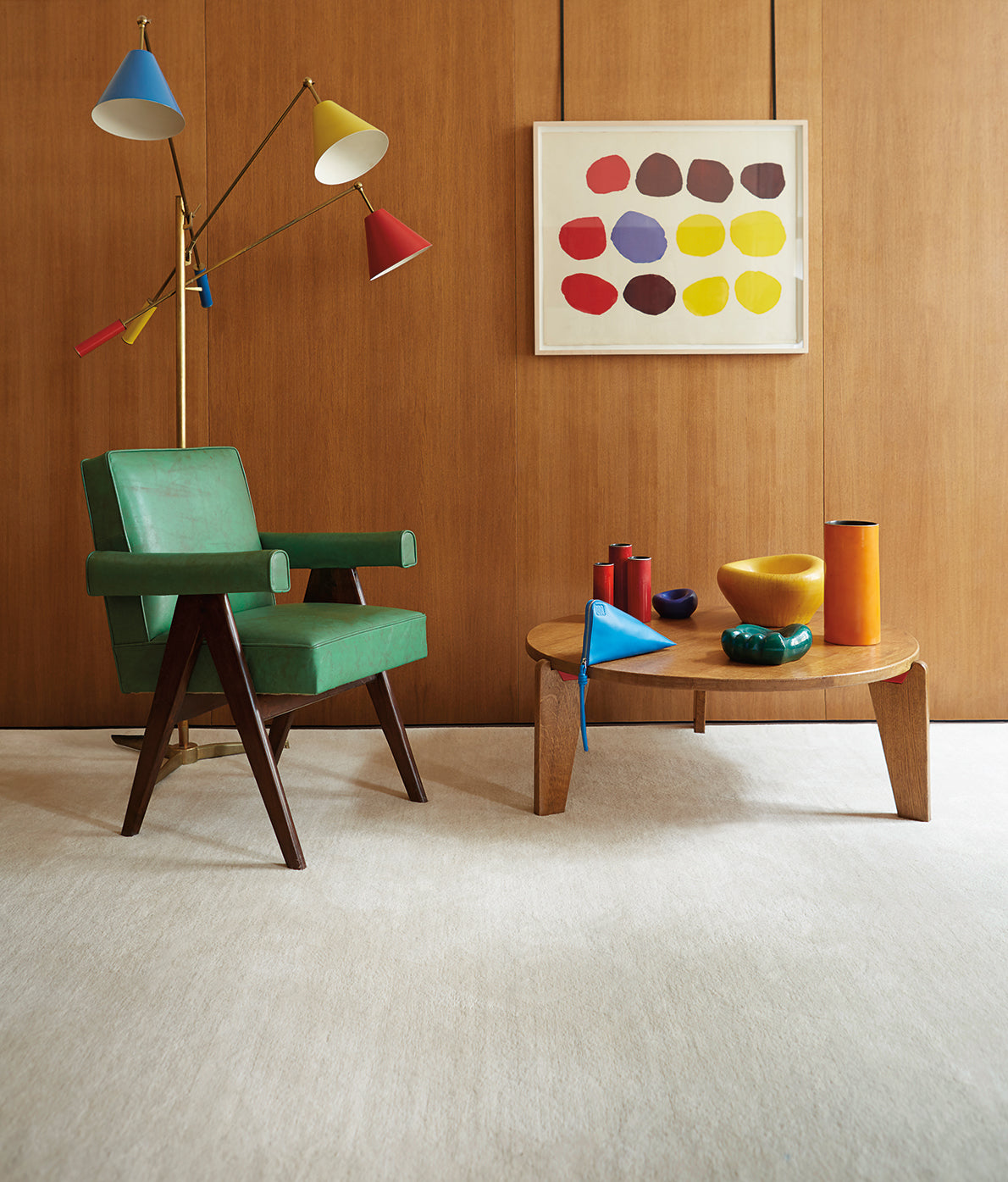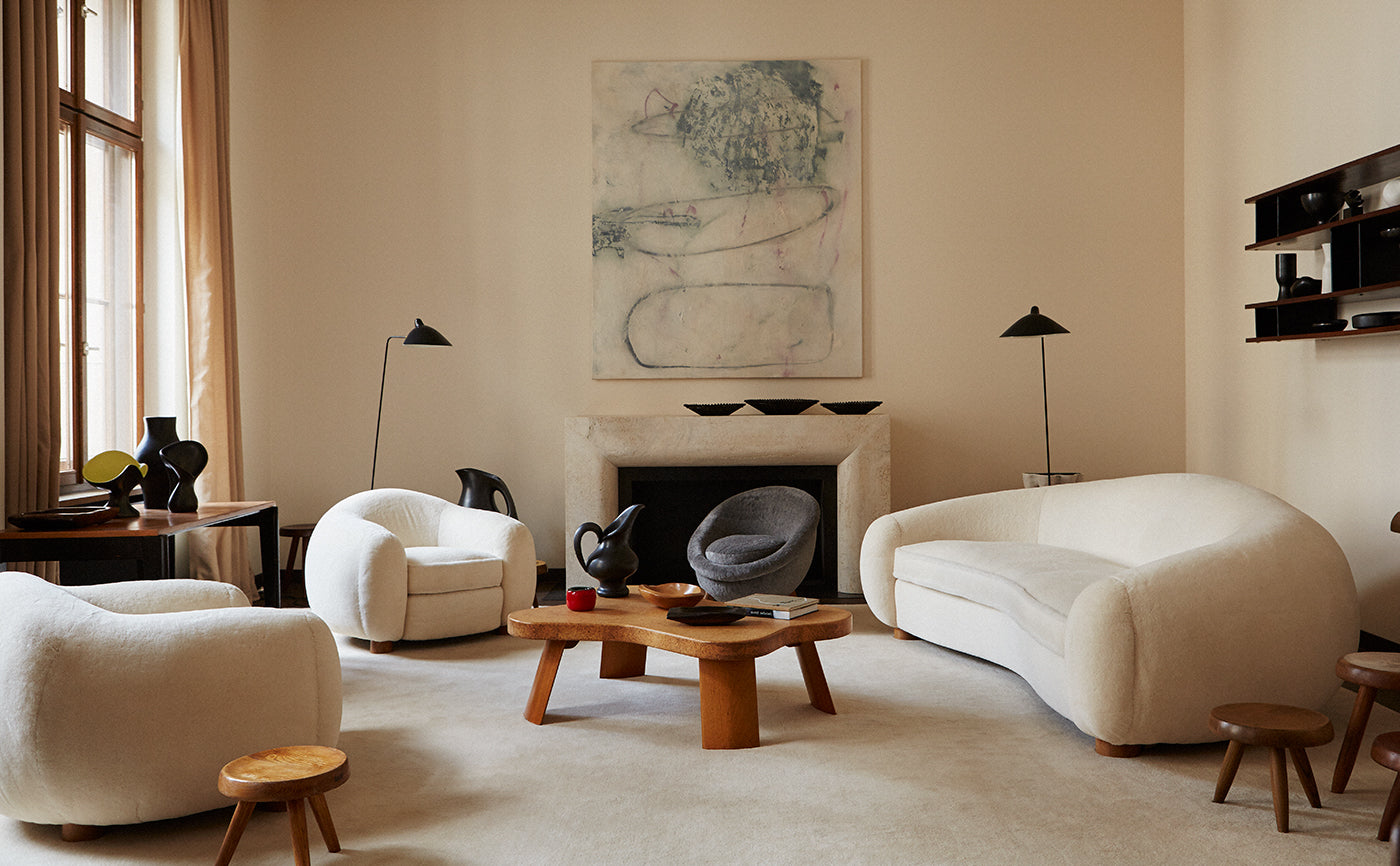
Color Enlivens Emmanuel de Bayser's Berlin Residence
Alex Anderson conveys the eminent design excellence inside this late 19th-century building in Berlin
The fundamentals of Emmanuel de Bayser’s Berlin apartment toe the line of cool, muted modern design. Yet there’s a trick at play: by adding distinct shots of color, de Bayser gives every room its own richly hued rainbow and, in doing so, creates a personal paean to the more playful side of mid-century design.

The distinctive V-shape of the chair pictured above was designed by Pierre Jeanneret for Le Corbusier as part of his modernist urban plans for Chandigarh, India. (Photo: Pelle Crépin, The Touch)
The thick walls, high ceilings, and double-paned windows insulate Emmanuel de Bayser’s apartment from the busy Berlin streets below. Housed in a 19th-century building, it is a calm space “in the hectic, permanent intensity” of the city, says de Bayser. “I turn the key in the door, and I feel at home.”
From the entrance, the apartment extends along with the first of several carefully composed vignettes that connect rooms and balance objects, textures, and colors. An inviting view reaches past a Jean Royère Polar Bear sofa to a weighty marble mantelpiece. Above the fireplace hovers Aqua Lido by XOOOOX, an abstract artwork in which obscure red tendrils and smoky gray swirls arise from a haze of white.

De Bayser grew up in Paris and keeps a pied-à-terre there— along with the rest of his mid-century furniture collection. (Photo: Pelle Crépin, The Touch)
De Bayser (who applies his good taste in a professional context as the founder of Berlin concept store The Corner) explains that he had not intended to mount the artwork in the room, favoring three-dimensional pieces—sturdy mid-century furniture and lustrous black ceramics—instead. But, he says, the painting “complemented everything”—in particular, the adjacent dining-room wall. Originally a paneled white plane (“something I wanted to hide,” de Bayser notes) its surface provides an insubstantial base for a black Serge Mouille cantilever lamp, whose three arms reach out over the heavy dining table and polished walnut floor.
Another perspective opens up when seated at the dining table, encompassing Jean Arp’s vivid Composition— Yellow, green, black and a Charlotte Perriand sideboard and a green Standard Chair and desk by Jean Prouvé. Strong light from a courtyard window bathes the desktop. From here, the library also unfolds; long wooden shelves that tame the unruly rhythms of multicolored book spines and that seem to converge, then turn behind the sheepskin depth of a Philip Arctander Clam Chair. At night, fading light contracts under a generous reading lamp as long rows of books recede into the dark.

A bowl by Alexandra Noll sits alongside pieces from de Bayser’s collection of Georges Jouve ceramics. (Photo: Pelle Crépin, The Touch)
In the bedroom, grained wood paneling forms a low horizon under the lofty ceiling. Color plays boldly against this textured field. Wonder Bread, a screenprint by Corita Kent, presents 12 vivid jolts of primary and secondary colors. The red, yellow, and blue cones of Angelo Lelli’s Triennale floor lamp echo the palette. Elsewhere, deep oranges, greens, reds, yellows, and blues shimmer out from de Bayser’s collection of Georges Jouve ceramics that is presented on a low wooden table.
In The Eyes of the Skin, architect Juhani Pallasmaa proposes that natural materials appeal to our sensibilities because they “allow our vision to penetrate their surfaces.” In these spaces, natural flooring, wall cladding, and furniture invite this kind of profound, haptic seeing. From the sofa in the living room, from the bed, the reading chair, the dining table—each composed vista brings objects and minds together in a contemplative, restful harmony. The glazed vessels in each room carry the eye and mind even deeper. De Bayser likes simply to relax in this home, he says, “by doing nothing and looking around.”
Transcending beyond visuals, explore a world of design that enhances the human senses through The Touch.


